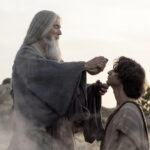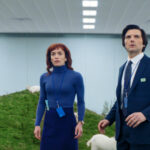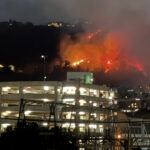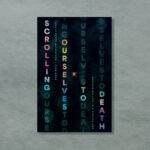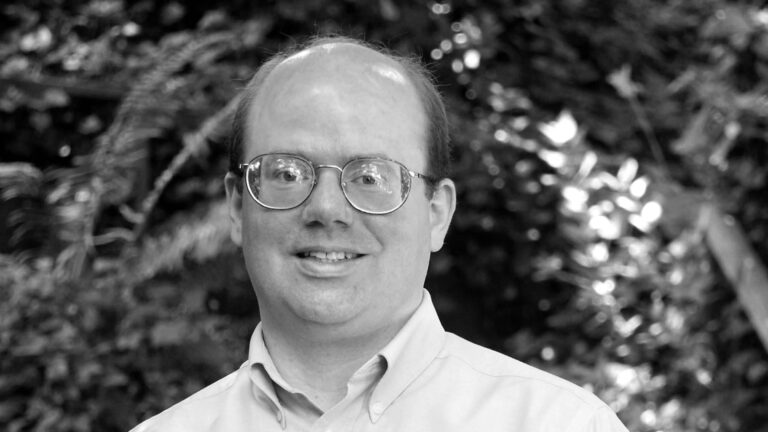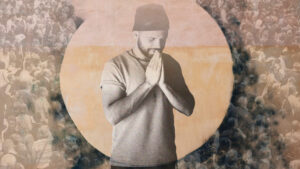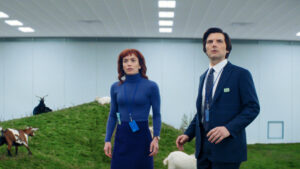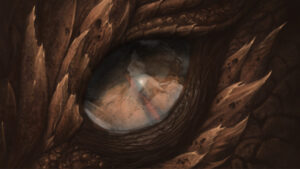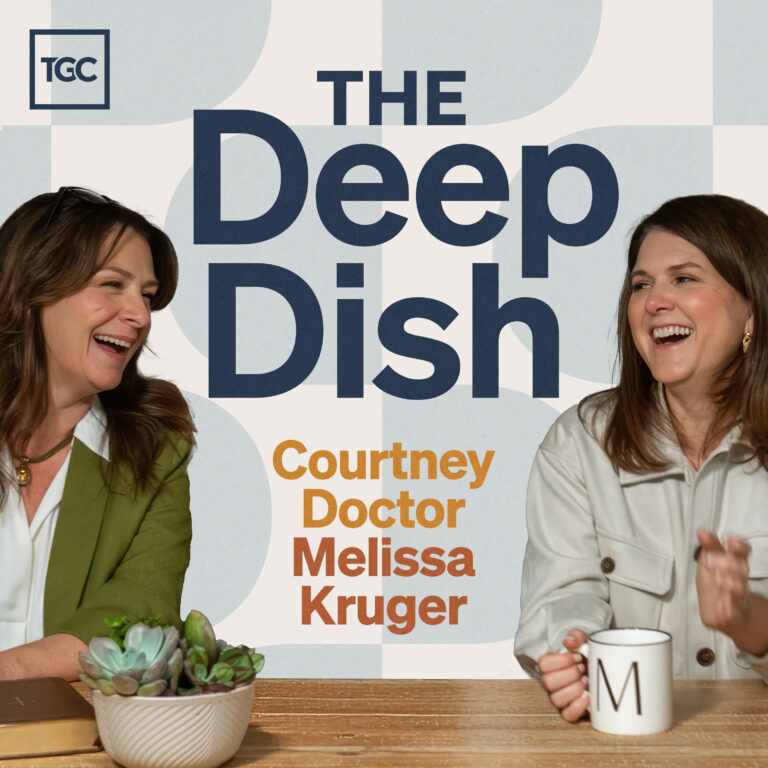TGC reviews media that is not suitable for everyone. To help readers make wise viewing decisions, we recommend reading “Should I Watch This?” and checking out a content guide.
“I remember damage.”
This line is repeated dozens of times in Station Eleven, a new 10-episode limited series adapted from the 2015 novel by Emily St. John Mandel. The line comes from the titular graphic novel that figures prominently in the show’s arc. The almost liturgical repetition of the line throughout the series underscores how much Station Eleven is about the way past trauma (“damage”) shapes our individual and collective futures.
The post-apocalyptic story follows a band of survivors of a global pandemic far scarier than COVID-19. The “Georgia Flu” decimates most of the world’s population in a matter of weeks, leaving traumatized survivors to carry on in a world quickly reduced to a pre-industrial society of tribes and nomads.
But as much as the reality of trauma’s effects is a major theme of the series—which is certainly as harrowing as you’d expect in the genre (not for young viewers!)—Station Eleven turns out to be a refreshingly hopeful drama that bucks the “trauma plot” trend. It’s a series convinced of what many in our brokenness-obsessed, “everyone’s traumatized” world seem hesitant to believe—that change is possible, victimhood is not an aspirational identity, and we can be more than the sum of harms inflicted upon us.
Subverting the Trauma Plot
“In a world infatuated with victimhood, has trauma emerged as a passport to status—our red badge of courage?” So asks literary critic Parul Sehgal in an insightful New Yorker piece, “The Case Against the Trauma Plot.” Engaging everything from Virginia Woolf to Ted Lasso, Sehgal critiques the reductionistic effects of trauma-obsession in storytelling, which “flattens, distorts, reduces character to symptom.” Despite the fact that “post-traumatic growth is far more common than post-traumatic stress,” many of today’s films, TV shows, and novels are enamored with bleak backstories that predictably determine a character’s messed-up present. But what of the drama of human resilience and growth?
Many of today’s films, TV shows, and novels are enamored with bleak backstories that predictably determine a character’s messed-up present. But what of the drama of human resilience and growth?
To be sure, the trauma at the center of Station Eleven is valid. The devastating flu kills most humans and changes everything. It’s a reset on par with the biblical flood. Even time is restarted. In a nod to the way Christ’s birth reset the ordering of time (BC and AD), the pandemic destroys the world at Christmastime in what becomes a sort of “year zero.” Throughout the series, we jump back and forth in time, but always in reference to the flu’s incarnation of death: “10 days before,” “80 days after,” “20 years after.” Characters born after the pandemic are referred to as “post-pans.” The tension of “before” and “after” runs throughout the show. Everything revolves around the moment when time was ruptured by the mother of all traumas.
The parallel between the coming of the flu and the coming of Christ, however, doesn’t lead the narrative in places you’d expect. If Christ’s arrival set in motion a shift of light dawning in history’s darkness (Isa. 9:2; John 1:1–9; 12:46, etc.), one would think the arrival of an apocalyptic flu would set in motion the opposite: a new dark age wiping away the “light” of civilization’s progress. Certainly there’s no shortage of this brand of post-apocalyptic narrative today. From The Walking Dead to The Road or even The Leftovers (a post-“Rapture” drama created by some of the same people behind Station Eleven), much of what we see in this genre is bleak and nihilistic.
But Station Eleven depicts a post-apocalyptic world where meaning still exists and darkness and trauma haven’t won. In some ways, the “after” world—at least 20 years into it—feels preferable to the supposedly enlightened world before the collapse. It’s interesting to observe how cold and dark the “before” scenes are compared to the warm, green, life-filled scenes of the world in the decades after. This is a visually hopeful show.
The last few minutes of the first episode make it clear: snow and ice in year one are juxtaposed with a jarring cut to year 20, filled with greenery and color. It sets the tone for the whole series. It’s not that the post-collapse world is some sort of sinless new Eden. There are still bad people and death is still very real. But far from hopeless, the “after” world offers a chance for a fresh start, not just surviving but growing—and carrying on the original human vocation to image our Creator by cultivating order out of chaos (Gen. 1:2, 28).
After Destruction, Creation
Destruction and creation are juxtaposed throughout Station Eleven. The opening scene of the first episode takes place in the ruins of a Chicago theater, now overgrown with greenery, pigs, and insects buzzing about. But then it cuts to 20 years earlier in the same space: a packed crowd watches a performance of Shakespeare’s King Lear. From that moment on, the series is constantly reflecting on the role of art amid the ruins—creation before and after destruction. The graphic novel that gives the show its name becomes an almost sacred text for the heroine of the series, Kirsten Raymonde (portrayed at different ages by Matilda Lawler and Mackenzie Davis), who is given a copy shortly before the pandemic upends her life as an eight-year-old. In a post-pandemic world where she might be tempted to succumb to nihilism, Kirsten instead clings to this book as a sort of anchor to transcendent meaning.
Years after the pandemic, Kirsten joins an acting troupe called “The Traveling Symphony,” a tribe of eccentric thespians and musicians determined to keep performing Shakespeare on a cyclical circuit. Even as she’s been forced to become fierce with a knife, Kirsten can also recite every line of Hamlet. Why bother with iambic pentameter in a world littered with decrepit skyscrapers and the bones of eight billion dead bodies? Because to be human is to create: to make things, and to make meaning, out of the chaos.
To be human is to create: to make things, and to make meaning, out of the chaos.
Other characters in the series do this in different ways. Clark (David Wilmot) creates a “Museum of Civilization” in an abandoned airport, where he and a group of survivors are lucky enough to find shelter at the start of the pandemic—and eventually a permanent home. Clark’s contribution to ordering the chaos is as a historian: curating and remembering artifacts of civilization’s past.
My favorite character, however, is Jeevan Chaudhary (Himesh Patel). At the start of the series he’s somewhat aimless, lacking vocational clarity and relational confidence. By the end, he’s stumbled into a vocation and a fatherly role that beautifully visualizes the “be fruitful and multiply” human mandate (Gen. 1:28). Comically, Jeevan is repeatedly mistaken for a doctor—from the first moments of the series to its penultimate episode (titled “Dr. Chaudhary”). But eventually he owns the doctor identity and becomes a real one.
In the pre-pan world, vocation was about finding your unique niche. In the post-pan world, vocation is about filling an urgent need. And the world needs doctors—people to run toward those in pain, deliver babies, keep vigil with the dying, prescribe healing ointments for burns. This is the chaos Jeevan is given to order. And he dutifully accepts the challenge.
After Expressive Individualism, Duty
As a lens for interpreting identity, responsibility, and vocation, expressive individualism is a decadent luxury that no longer makes sense in the post-apocalyptic world of Station Eleven. No, in this world of rugged resilience, going it alone doesn’t work. People need others—not only to survive but to be human, to make meaning. Jeevan and Kirsten help each other survive, but also make sense of a world so jarringly changed. Each member of the Traveling Symphony contributes and learns from the others—collectively piecing together the fragments of a lost world, and carrying it forward like the monastics in the dark ages. We were made not for unencumbered isolation, but for mutually enriching community (Gen. 2:18).
Individuals matter in Station Eleven, but pairs, trios, and tribes matter more. We understand characters—and they understand themselves—in reference to the others whose fates intertwine with their own, often as a result of unchosen circumstances. In our current world, where it’s within our power to curate feeds and chart paths entirely free of unchosen obligations, the world of Station Eleven feels foreign. But it’s strangely attractive. With fewer self-indulgent options and more obligations to others, the survivors seem happier. Imagine that.
With fewer self-indulgent options and more obligations to others, the survivors seem happier. Imagine that.
In the post-pan world there’s a noticeable absence of smartphones—perhaps modernity’s ultimate icon of “i”-centric autonomy. The first episode jokes about this by having Jeevan and Kirsten deal with the “trauma” of a smartphone’s battery dying. But a few episodes later, in the decades after the flu, post-pan children look at a smartphone in the Museum of Civilization with befuddlement. They have no idea what it is. They can’t wrap their minds around concepts like the internet, WiFi, and the cloud. They’ve grown up in a world where knowing how to start fires and skin animals is more essential than knowing how to swipe left or right. There are no “virtual” worlds or social media pseudo-events to distract them from the real world—in all of its scary, sublime wonder. What they have instead is a chance to begin anew in a world as brutal as it is beautiful—a world that beckons them to do what humans have always done: tame wilderness, order chaos, and breed flourishing.
It’s not that Station Eleven romanticizes this post-apocalyptic world. Filled as ever with fallen-by-nature humans, it has its share of problems. But by stripping away the decadence of late modernity (no more Twitter, praise God!) and showing us what it means to be a purposeful, antifragile human in our created essence, the series reminds us of what we’ve lost and might regain.
In the face of terrible trauma, the heroes of Station Eleven choose to keep growing. Dealt a hand of unthinkable brokenness, they choose to rebuild. Confronted with chaos, they choose to be agents of order. Tempted by retreat into self-referential pity, they choose to serve others. Surrounded by things to fear, they choose courage.
May that be true of us too.
“The Most Practical and Engaging Book on Christian Living Apart from the Bible”
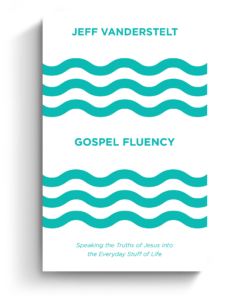 “If you’re going to read just one book on Christian living and how the gospel can be applied in your life, let this be your book.”—Elisa dos Santos, Amazon reviewer.
“If you’re going to read just one book on Christian living and how the gospel can be applied in your life, let this be your book.”—Elisa dos Santos, Amazon reviewer.
In this book, seasoned church planter Jeff Vanderstelt argues that you need to become “gospel fluent”—to think about your life through the truth of the gospel and rehearse it to yourself and others.
We’re delighted to offer the Gospel Fluency: Speaking the Truths of Jesus into the Everyday Stuff of Life ebook (Crossway) to you for FREE today. Click this link to get instant access to a resource that will help you apply the gospel more confidently to every area of your life.








